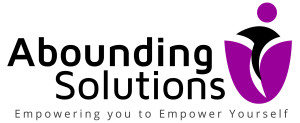Despite the awareness that has been raised over recent years about the unfavourable bias towards introversion in the workplace, this bias still very much exists.
I see this time and time again through my coaching clients, workshop and webinar attendees, and the many comments and messages I receive in response to the articles I publish in this newsletter.
The recent poll I conducted on LinkedIn asking whether or not people thought that introverted women leaders found it hard to show their true identity at work was very telling. A whopping 93% of you think that they do find it hard.

Whilst we are seeing some shifts (I am increasingly being invited into organisations to deliver talks, webinars, and workshops on the topic), there is still a way to go.
Historically in many parts of the West, extroverted traits have been associated with good leadership, and the corporate environment is very much geared towards extroversion. Whereas Nordic countries and certain Asian countries such as China and Japan embrace introversion as a leadership quality.
There is still a misunderstanding for many people about what introversion is. This lack of understanding along with the way that certain systems and processes in the workplace are designed, lend themselves to an unfavourable bias.
A year ago, I set up an assessment on my website for introverted women leaders, and to date 996 people have completed it. The responses show me that there is still a lot of work to be done to make the work environment one where people who are introverted can thrive as themselves.
The unfavourable bias, and the misunderstanding of introversion can also negatively impact the self-perception of many introverted people. So, whereas they maybe well qualified (and in many cases I have come across, overqualified) and competent, because they have spent so long in cultures and environments that do not appreciate the value of their introverted strengths, imposter syndrome and self-doubt is a regular occurrence.
On a scale of 1 to 10, 80% of people who completed the Confidence, Influence & Impact assessment for introverted women who are senior leaders rated themselves a 7 or below to having a high level of confidence and not experiencing imposter syndrome.
Of the people who completed my assessment, on a scale of 1 to 10 (with 1 being low and 10 being high), 80% rated themselves a 7 or below to the statement ‘I have a high level of self-confidence and self-belief and do not put limitations on what I can achieve. I do not experience imposter syndrome or other self-limiting beliefs, but if I do, I can easily manage it and not let it hinder me.’
For the majority of the introverted women leaders that I work with, they have achieved great success in their careers, but the internal pressure that imposter syndrome and self-doubt places on them is stressful and draining.
Some of the workplace practices that are unfavourably biased towards introversion include:
- Meetings
- Interviews
- Networking
- Open plan offices
- Brainstorming
- Self-promotion
These either don’t give introverted people the time needed to process their thoughts before responding, or they contain activities external to the mind that can be overly. This overstimulation depletes their energy and can make them want to retreat inwards, and unable to engage at their best.
On a scale of 1 to 10, 85% of people who completed the Confidence, Influence & Impact assessment for introverted women who are senior leaders rated themselves a 7 or below when it comes to good speaking performance in meetings.
For example, speaking up in meetings is one of the biggest challenges amongst the introverted people that I work with, and who contact me. Of those that completed my assessment, 85% rated themselves a 7 or below out of 10 to the statement ‘I am a confident and engaging speaker and command the room at meetings, so my voice is heard. I am as confident speaking up in the boardroom as I am anywhere else.’
The way that most workplace meetings are conducted do not allow for the processing of thoughts which introverted people have a preference for. They are unable to gather their thoughts and put together their response in the way that works best for them.
They have to deploy different techniques to enable them to give their best participation in meetings. This includes going through the agenda in advance of meetings and doing a lot of their thinking beforehand. However, unfortunately, with many meetings these days, agendas and reports are sent out last minute, if at all.
By being aware of the bias that exists, leaders in organisations can review their practices to see how they can make them more inclusive towards introversion. This requires leaders challenging the status quo, reviewing practices, and not just doing things the way they do because they’ve always been done that way.
How aware is your organisation of unfavourable bias towards introversion? If they are not, how can you start the conversation about it?
First published on LinkedIn.
If you are an introverted woman and a senior leader and want to increase your confidence, influence and impact, take my free assessment and get a report identifying areas to develop. You can take the assessment here.

